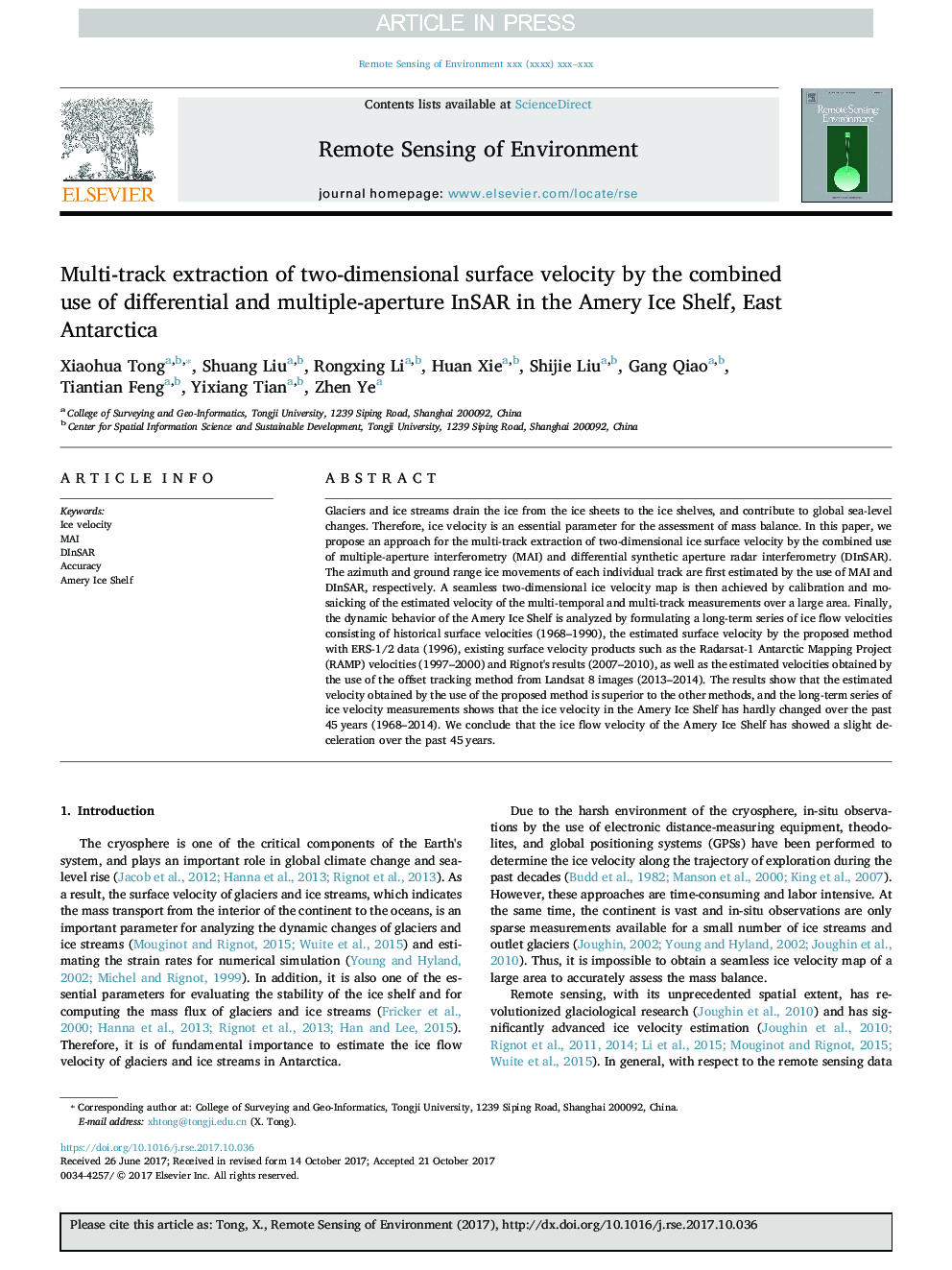| Article ID | Journal | Published Year | Pages | File Type |
|---|---|---|---|---|
| 8866829 | Remote Sensing of Environment | 2018 | 16 Pages |
Abstract
Glaciers and ice streams drain the ice from the ice sheets to the ice shelves, and contribute to global sea-level changes. Therefore, ice velocity is an essential parameter for the assessment of mass balance. In this paper, we propose an approach for the multi-track extraction of two-dimensional ice surface velocity by the combined use of multiple-aperture interferometry (MAI) and differential synthetic aperture radar interferometry (DInSAR). The azimuth and ground range ice movements of each individual track are first estimated by the use of MAI and DInSAR, respectively. A seamless two-dimensional ice velocity map is then achieved by calibration and mosaicking of the estimated velocity of the multi-temporal and multi-track measurements over a large area. Finally, the dynamic behavior of the Amery Ice Shelf is analyzed by formulating a long-term series of ice flow velocities consisting of historical surface velocities (1968-1990), the estimated surface velocity by the proposed method with ERS-1/2 data (1996), existing surface velocity products such as the Radarsat-1 Antarctic Mapping Project (RAMP) velocities (1997-2000) and Rignot's results (2007-2010), as well as the estimated velocities obtained by the use of the offset tracking method from Landsat 8 images (2013-2014). The results show that the estimated velocity obtained by the use of the proposed method is superior to the other methods, and the long-term series of ice velocity measurements shows that the ice velocity in the Amery Ice Shelf has hardly changed over the past 45Â years (1968-2014). We conclude that the ice flow velocity of the Amery Ice Shelf has showed a slight deceleration over the past 45Â years.
Keywords
Related Topics
Physical Sciences and Engineering
Earth and Planetary Sciences
Computers in Earth Sciences
Authors
Xiaohua Tong, Shuang Liu, Rongxing Li, Huan Xie, Shijie Liu, Gang Qiao, Tiantian Feng, Yixiang Tian, Zhen Ye,
